How the Cootie Effect Can Reduce Virus Transmission
A simple behavioral design hack can encourage safer actions
Can a simple behavioral design hack encourage people to behave in ways less likely to pass on pathogens like the coronavirus?
Doors that close must be opened
Door handles are a prime way to spread viruses and bacteria in any environment, simply because they are designed to be interacted with. We usually use our hands to push, pull, or rotate these handles. The current pandemic makes these actions particularly problematic, as it appears that the novel coronavirus can survive on surfaces for hours or even days.
The idea that door handles transmit infection isn’t new – scientists have been studying them for years. While one test showed that door handles had fewer germs than other bathroom surfaces, another found that door handles had far more germs than grocery carts and treadmill handles.
While concentration may vary in different environments, the presence of germs on door handles isn’t in doubt.
Cruise lines have been coping with virus outbreaks (typically norovirus) for years, and one of the steps they have taken is to encourage guests and staff to never touch a bathroom doorknob directly. Rather, they suggest using a disposable tissue or paper towel. Dispensers and waste receptacles are usually provided. Here’s an example from a Disney cruise ship captured by author Cory Doctorow:
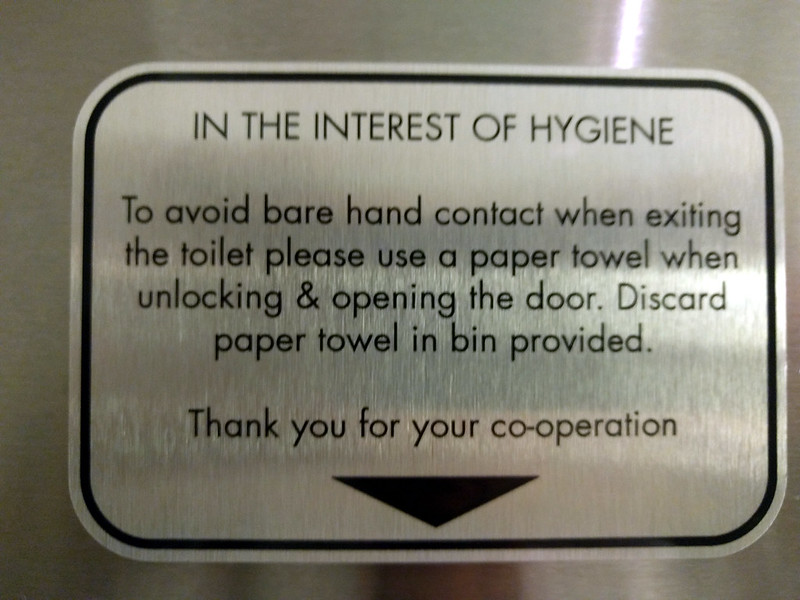
Land-based businesses have adopted the same practice, using signs like these:
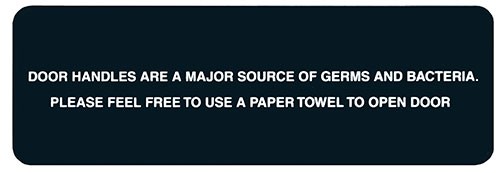
This isn’t a perfect solution for several reasons. First, these signs (and appropriate supplies) are almost always seen only in bathrooms, not entry doors, ship cabin or hotel room doors, etc.
Second, and even more important, they are ignored by many restroom users. Pre-coronavirus CDC data showed that just 31% of men wash their hands after using the restroom. It’s a good bet than non-hand-washers don’t stop for a tissue before touching the door handle. (Women did better, with 65% washing their hands. I really hope that in the current crisis the numbers are up for both genders.)
Third, wordy messages like these aren’t particularly good at changing behavior.
In fact, even simple, psychology-based messages don’t work very well. One robust study examined over 200,000 restroom uses. The researchers tested a variety of nudges to increase hand-washing, but found they had minimal impact. The most effective message for men used social proof. After viewing a sign that asked, “Is the person next to you washing with soap?” hand-washing went up from 31.2% to 35.5%. A 14% increase is better than nothing, but overall compliance remained low.
System 1 vs. System 2
Daniel Kahneman divides our thought processes into System 1 and 2. System 1 is quick, mostly unconscious, and often relies on emotion, intuition, or heuristics (rules that govern our behavior in specific circumstances). System 2 is more analytical and involves us consciously thinking about the decision.
The cruise ship instructions need System 2 processing. They invoke “the interest of hygiene” – who is “Hygiene,” anyway? Not the person exiting the rest room. Not the crew or other passengers. Then, there’s a wordy paragraph of instructions that the passenger can’t interpret without actually reading the text.
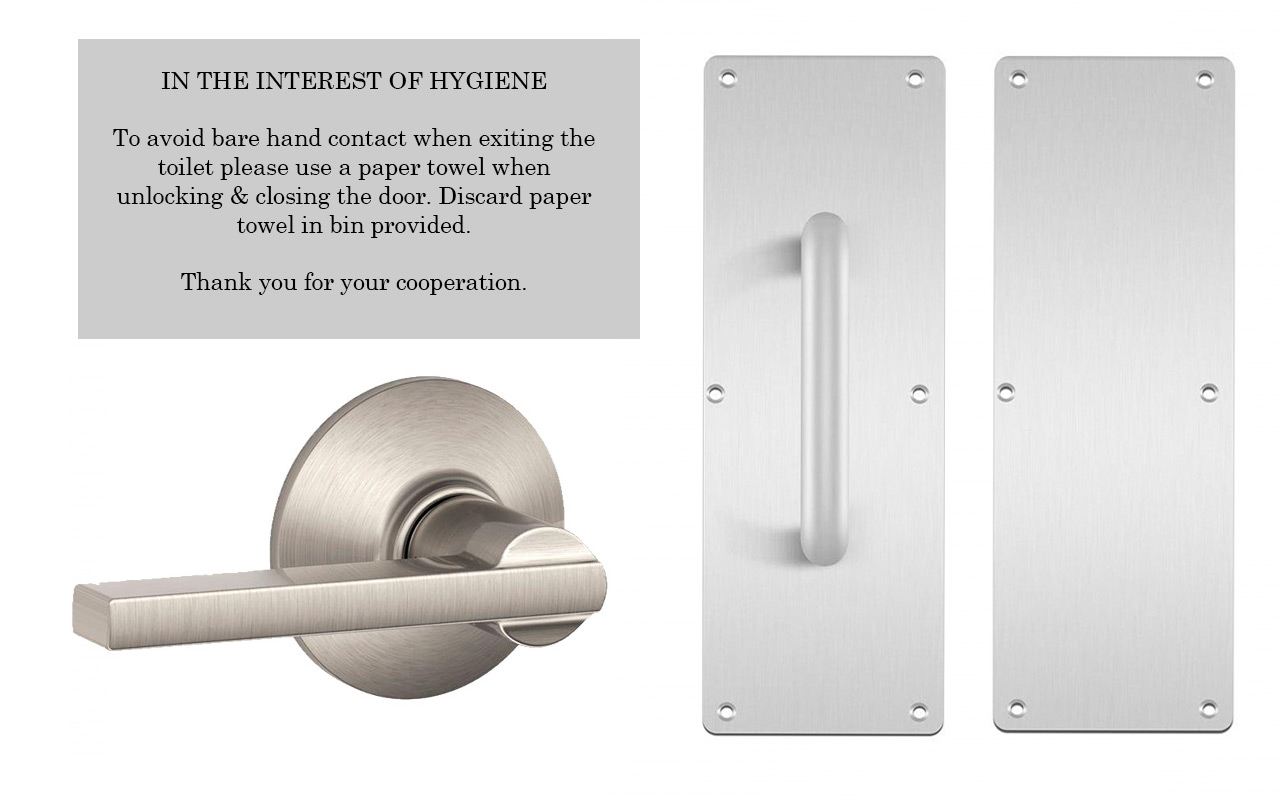
It’s understandable that an upscale cruise line wouldn’t be overly aggressive in trying to modify the behavior of its passengers, and under normal circumstances this mild message encourages the desired behavior without pushing too hard.
Today, the world is different. The cruise industry is largely shut down because of the risk of coronavirus spreading in densely populated ships. And, every location where people gather – stores, offices, etc. – is a potential hot zone.
There’s no single intervention that will solve hand-washing and door-handle problems. But, instead of relying on text, I propose a fairly simple change to the handles themselves:
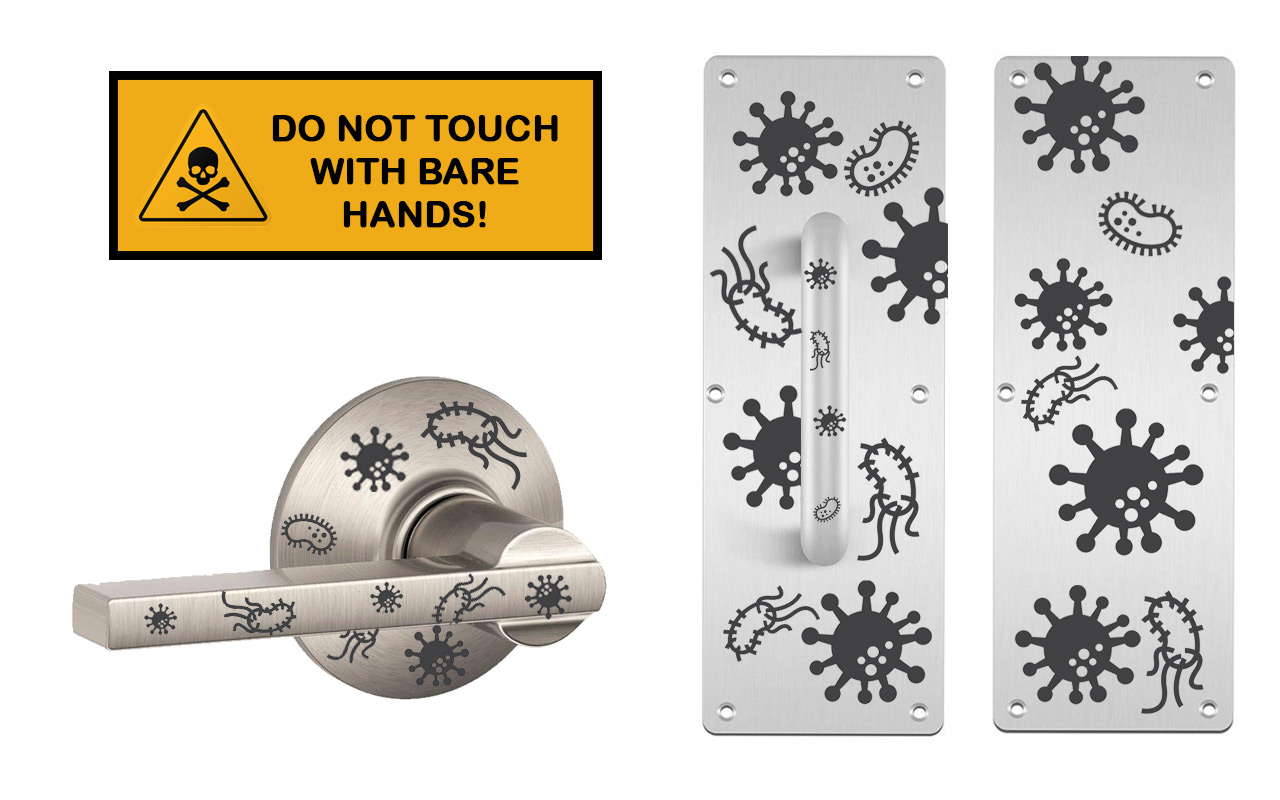
An easily processed warning sign would help as well. Conveyed this way, the concept that you really shouldn’t touch the handles with your bare hands becomes obvious and intuitive, i.e., System 2 processing.
Scary images might even activate the viewer’s amygdala, increasing the saliency of the message.
The Cootie Effect
We know that our brains associate touching with a transfer of negative characteristics it’s the Cootie Effect. Even placing a “disgusting” product like lard or feminine hygiene products next to cookies in your supermarket shopping cart will make those cookies seem less tasty.
While I haven’t tested my virus-covered door handle with real subjects, I find it very likely that it would result in fewer bare-hand touches.
As a bonus, if you touch the handle accidentally, you will have the mental image of touching something infectious. Just like the products in your shopping cart, your hand now has cooties. A hand sanitizer dispenser on either side of doors marked this way would be a quick way for you to remove those cooties from your hands.
How to use the Cootie Effect to reduce virus transmission. #Neuromarketing #BehaviorDesign Share on X
Nobody Will Do This, It’s Revolting
I admit that it’s hard to imagine your local Ritz Carlton putting huge, scary images on every door handle. But, we’ve also seen that text signs with different nudges had little effect on behavior.
 So what can offices, stores, and other locations that must operate during the coronvirus crisis do? I think appropriately placed stickers could really help. These could be small but graphic – a biohazard symbol, a skull & crossbones, or virus/bacteria imagery like mine.
So what can offices, stores, and other locations that must operate during the coronvirus crisis do? I think appropriately placed stickers could really help. These could be small but graphic – a biohazard symbol, a skull & crossbones, or virus/bacteria imagery like mine.
Actually, the scientific accuracy of the image is less important than its ability to create a sense of revulsion. Revulsion isn’t what we are usually looking for in our customer and employee experience, but it’s the psychological trigger that will impact their behavior.
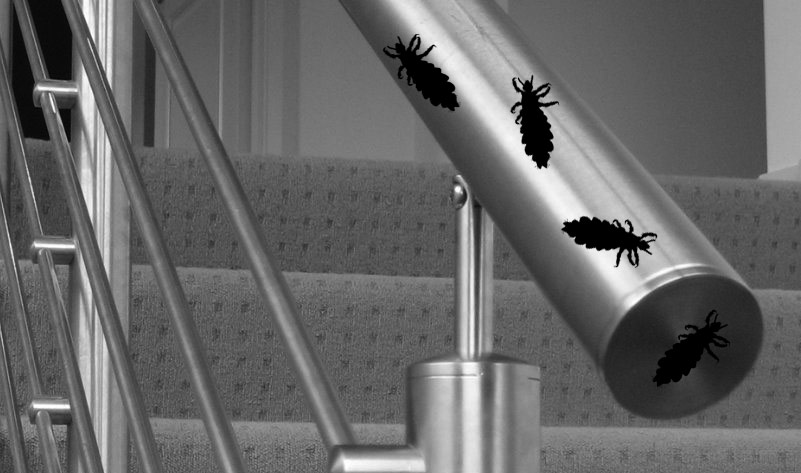
My modest proposal is to label any item in the environment that could be a means of transmitting the virus, like hand rails, counters and other commonly touched items. Ideally, these labels would use an adhesive that would allow easy removal when the current crisis is over.
I’ll add, though, that this approach has not been tested in real world or lab settings. Humans don’t always behave as we expect. Still, it’s not a big leap from other research to think this might work.
Could even short-term exposure to these images in unexpected places lead to longer term behavior change? With our increased awareness of infection today, I think the answer is “yes.”
Our brains don’t like cooties, and avoiding imaginary ones may help us avoid the real, life-threatening ones.
Prevent REAL virus transmission by making people see imaginary COOTIES. #Neuromarketing #BehaviorDesign Share on X
